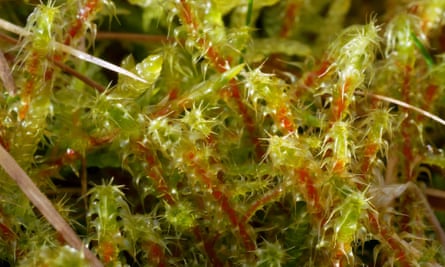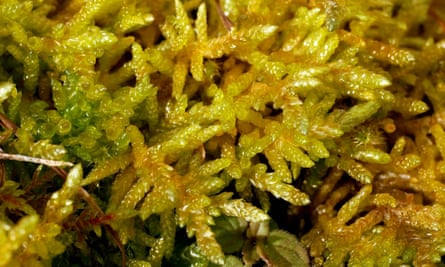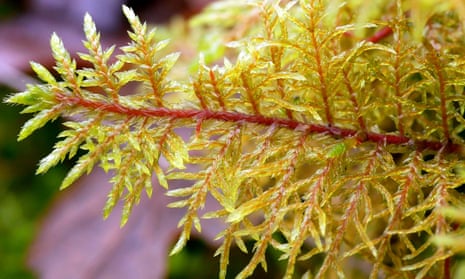With winter almost over it’s tempting to hunker down during these last cold days and focus on the prospect of primroses and bluebells, but there is beauty to be found now in lowlier forms of plant life. Many woodland and grassland mosses begin new growth while it is still too cold for trees to leaf and grass to grow, before they can be cast into deep shade by surrounding vegetation.
Today the top of a wall beside this lane near the river Tees was decked with new green carpets. The most luxuriant was springy turf moss, Rhytidiadelphus squarrosus, familiar to anyone who has a poorly drained lawn. Its unruly red-stemmed shoots, forcing their way like jack-in-the-boxes through the matted remains of last year’s grasses, shone in the early morning light. As I bent to examine its hooked leaves, with their long, silvery hair points, there was a hint of that humic aroma of sun-warmed soil that grows stronger as spring approaches.
Nearby was a softer landscape of neat feather moss, Pseudoscleropodium purum. If turf moss is the coconut mat in the doorway, this species is the finest living-room carpet, a tactile forest of tight whorls of leaves and smooth shoots.

And then, most splendid of all, there was glittering woodmoss, Hylocomium splendens, its filigree shoots and crimson stems still decorated with last night’s raindrops. I watched a minute springtail plodding its way around the edge of one of the fractal fronds, a day-long epic journey if it followed the perimeter of every golden leaf.
These 5cm-tall forests of interwoven fresh growth, descendants of the first plants that began to colonise dry land half a billion years ago, are microcosms, home to a vast array of small animals; nematode worms, mites, midges and molluscs thrive in their shady, damp recesses. It’s tempting to let the imagination wander here too, to pick up a hand lens and follow a millipede into the deepest recesses of the wildwood of mosses.

So much of natural history focuses on charismatic organisms like birds and mammals, overlooking the world at the soil surface where the foundations of biodiversity lie.

Comments (…)
Sign in or create your Guardian account to join the discussion